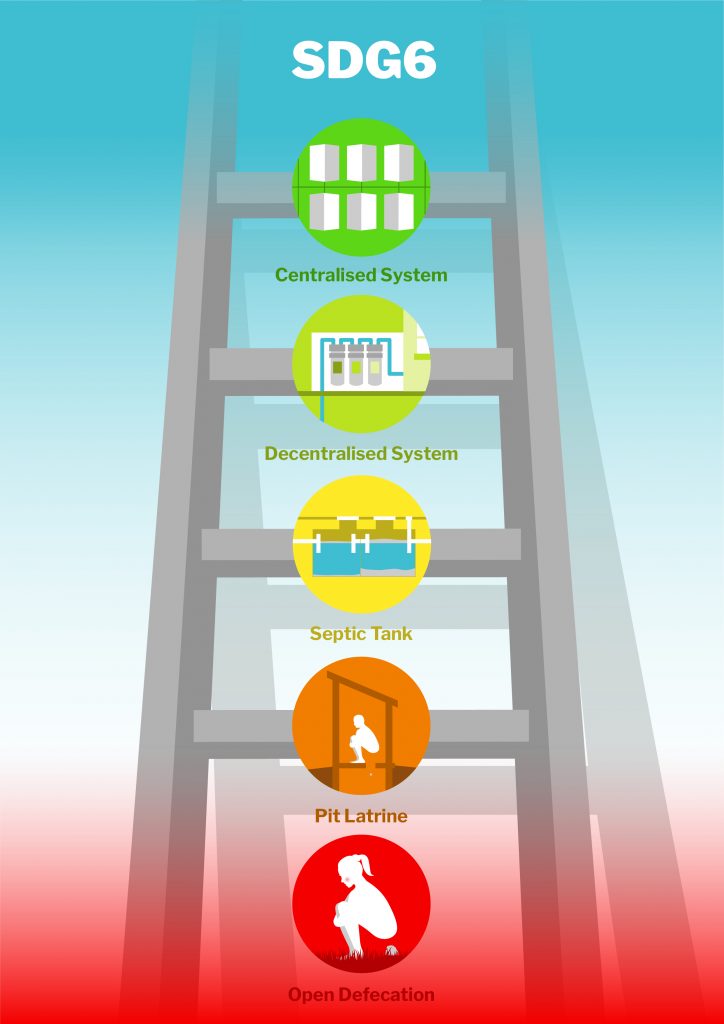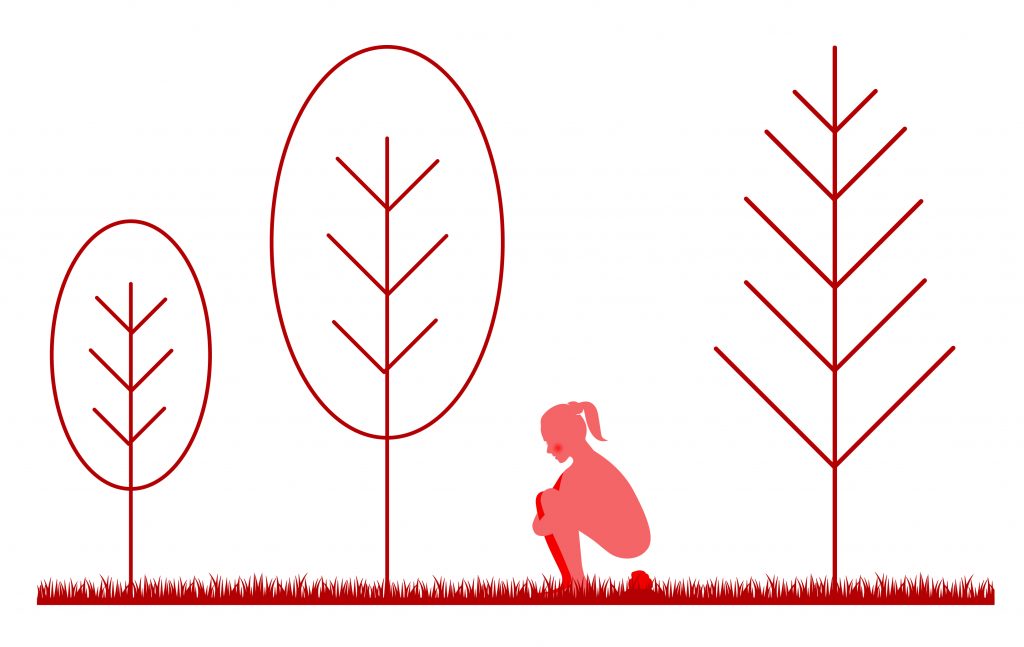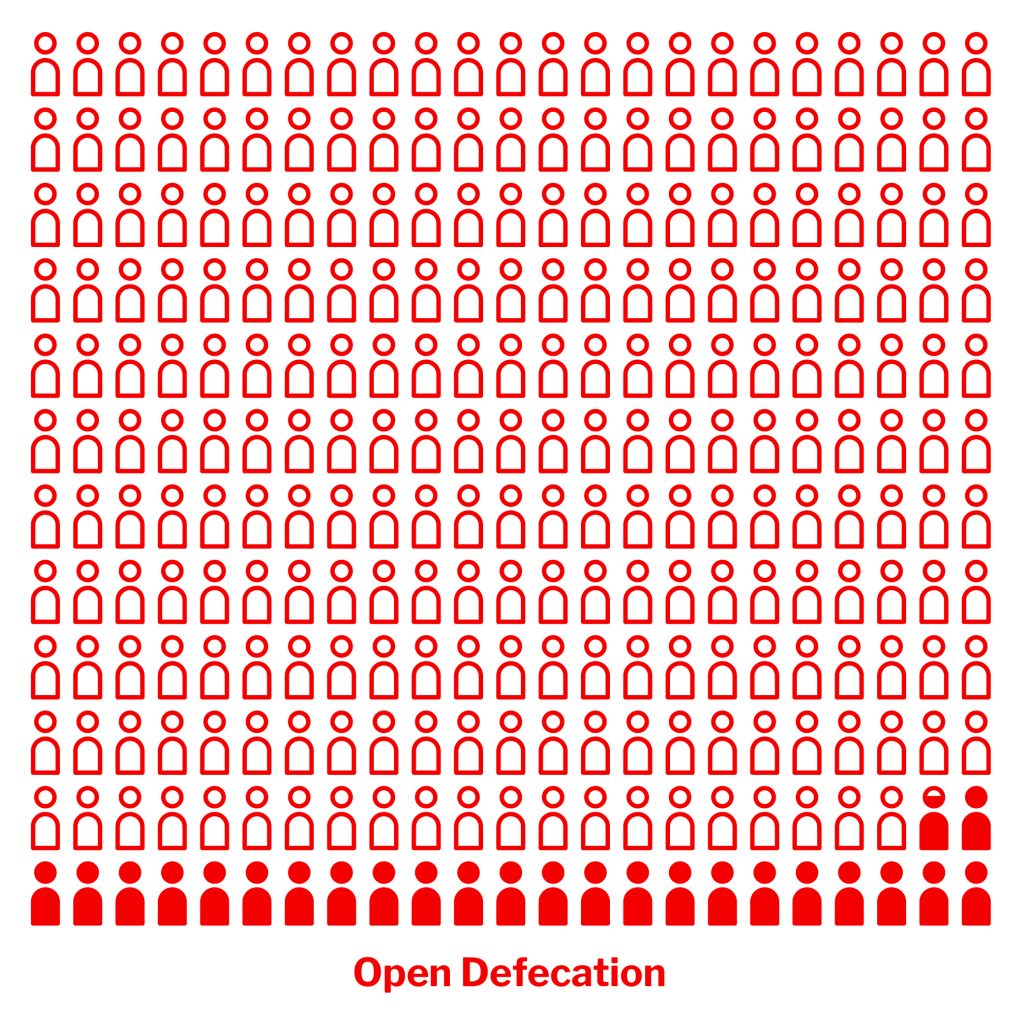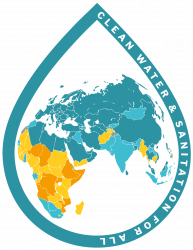There are various solutions for sanitising developing countries, with pit latrines being the first step on the sanitation ladder. This ladder goes all the way up to a centralised system, which we have in the UK, through septic tanks and decentralised systems. Each solution offers its own advantages and disadvantages which are outlined in their respective section. In addition to this, basic handwashing solutions are summarised, as many countries are economically disadvantaged and cannot afford basic hand washing systems.

The images created for the solutions are colour coordinated depending on their sustainability. For example, a centralised system is represented in a dark green colour, as it has excellent sustainability. The design-ability rating colour scheme is shown below.

Open Defecation
Defined as the practice of defecating outside, in an open environment, such as fields, waterways and trenches without any disposal of human excreta. This practice is commonly undertaken where sanitation infrastructure and services are not readily available. Due to traditional cultural practices, behaviour changed are still required for people who are not used to toilets and the use of them needs to be promoted [1].

The term “open defecation free” (ODF) refers to communities which have transitioned from openly defecating to more hygienic solutions such as pit latrines or toilets. Implemented community-led total sanitation projects can prompt with this transition, helping to produce a community with greater hygiene levels.
673 Million people still openly defecate. This number has decreased considerably from 892 million in 2016. Nevertheless, with almost 10% of the earth’s population still openly defecating, a mammoth task is at hand to eradicate this practice by 2030 [2].


